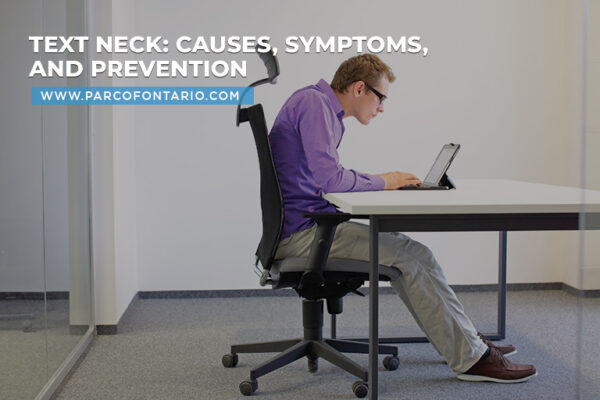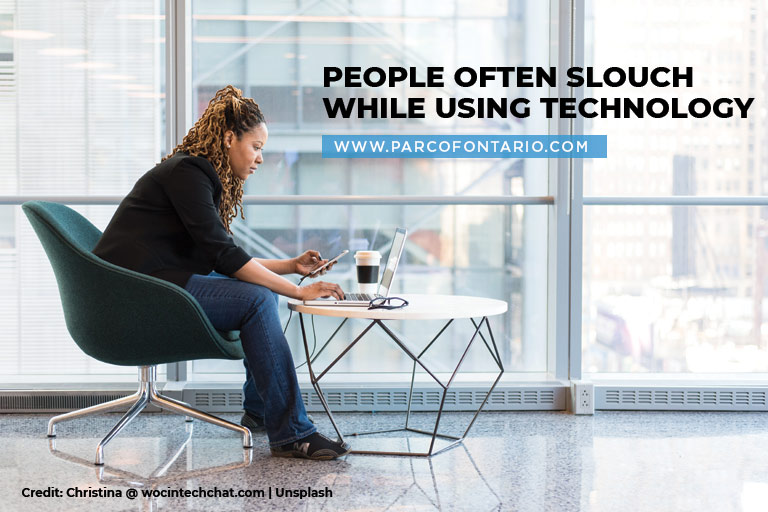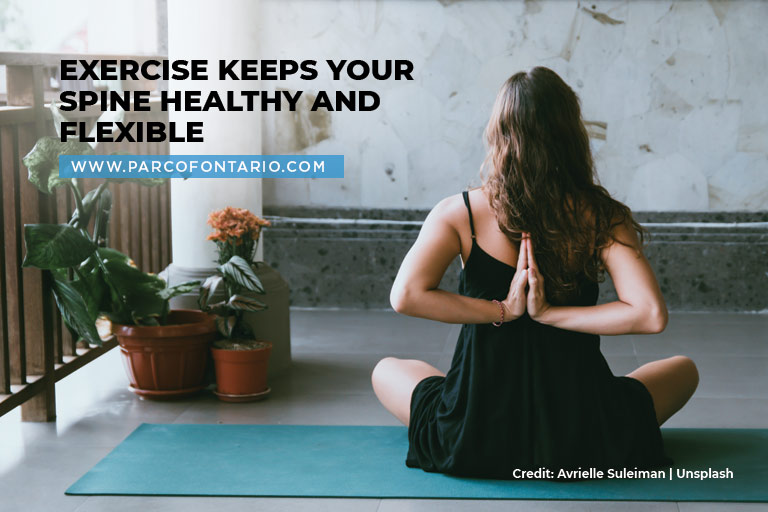
Text Neck: Causes, Symptoms, and Prevention
Many of us spend long hours hunching over our electronic mobile devices and laptops. As we spend more time texting, browsing social media, and reading on our devices, this constant downward gaze…
Read More
Posture refers to the way the spine is aligned with the head, shoulders, and hips when standing up or sitting down. When one has good posture, the spine should be neutral, and the muscles, joints, and ligaments should be positioned in a way that reduces strain, promotes flexibility, lessens fatigue, and assists in maintaining balance. Unfortunately, most people find themselves slouching more than what is healthy for the spine.
This makes bad posture quite common. Poor posture can be caused by many variables, such as simple things like sitting down or more serious situations like being involved in an accident. The effects of bad posture can manifest in a variety of ways. In addition to affecting your appearance, self-esteem, and overall well-being, postural problems can also cause fatigue, tension and discomfort, muscle aches, and poor digestion.
Here are signs and causes of bad posture as well as how to fix bad posture.
The ideal posture has the spine in alignment with the head and limbs, however unhealthy habits like slouching and lack of exercise lead to muscle fatigue and stress, which in turn causes poor posture.
The unwanted strain on your upper and lower back is among the most well-known negative consequences of bad posture. Slouching forward will compress your shoulder blades and also flatten your back muscles.
After a long day at work, if you get pain behind your neck and around your tailbone, you are probably not sitting up straight.
Poor posture puts a strain on the posterior muscles, giving an adverse effect on the neck. Because of the forward head posture, the neck’s joints and discs are put under a lot of stress as they attempt to support the head’s weight. This causes the neck muscles to be overworked increasing the tension in the region where the muscles join to the back of the head. The strain caused by this creates tension headaches.
Getting too little sleep can also be a side effect of bad posture. The inability to fully relax the body may cause overnight tossing and turning to find a position that is comfortable for the neck and back, which can cause hours of lost sleep.
An “S” shape is formed by the spine’s three primary curves when properly aligned. The spines are designed to absorb trauma, but poor posture can gradually reduce this capacity, putting too much pressure on the wrong position and increasing your body’s susceptibility to further harm. Teenagers and young adults are most likely to exhibit a hunched back, which usually coexists with a forward head posture and rounded shoulders.
Digestive issues are also effects of bad sitting posture. An organ’s ability to function properly can be hampered due to compression. Also, slouching puts pressure on the stomach, causing the acid to move in the opposite way and causing heartburn and acid reflux.
Low confidence and self-esteem are often linked to bad posture. According to studies, individuals who sit up straight and have good posture have more self-esteem than those who do not.

It is easy to overlook how people manage their posture to accommodate muscle strain and spasms while performing daily activities. Often, the body is forced to use different, less efficient patterns of muscle contraction and extension. Despite being able to move, the alignment of the spine and the muscles is compromised.
Muscles tend to spasm after an injury to protect the area that was previously hurt. Over time, muscles become weaker as a result of frequent spasms. Abnormality in body posture may also occur from the imbalance between the muscles protecting an injury and those that are still functioning normally.
Sometimes, having a bad posture is purely genetic. Some people are born with conditions that might influence their posture and the way their hips and spine grow. Fortunately, treatments provided by medical specialists can help these conditions be controlled.
Besides physical factors, emotional ones like stress can also contribute to poor body alignment. Stress frequently tightens the muscles, which negatively affects the body’s posture.
When you perform daily tasks in a way that puts tension on your muscles or uses them unevenly, such as lifting heavy objects, you run the risk of developing muscle weakness or tension. When certain muscle groups become weak or tight, your posture can be negatively affected.
The posture can also be seriously affected by shoes, particularly those that provide poor support. Using worn-out shoes can result in pain and poor posture as the ankle, knee, hip, and lower back are subjected to imbalanced forces. High heels can also throw the body out of alignment since they do not provide enough support.
When looking at their smartphones and laptops, the majority of people bow or tilt their heads downward or forward. Spending all day using a smartphone or in front of a computer, can cause the body to gradually become out of alignment.

Considering the factors getting in the way of good posture may be of great help in fixing bad posture. Maintaining proper posture is more than just standing or sitting straight to look your best, good posture is also important in the body’s long-term wellness.
Here are a few tips to fix bad posture:
When you slouch, your spine is placed through even more strain. The bones, muscles, and joints that support your backbone are put under a lot of stress as a result of this. The first step in preventing slouching is to be aware of your posture. When you are so concentrated on what you are doing, posture is usually forgotten. You might not think much about it, but your posture is greatly influenced by how you stand and sit.
Sleeping shouldn’t be an excuse to neglect your posture. Pick a mattress that is firm enough to maintain the natural curve of your spine. Knees should be slightly bent but not hugged if you sleep on your side. Put a pillow under your head to ensure that it is aligned with your spine. A small pillow under the neck is better than a thick one for back sleepers.
Maintaining an active lifestyle is one of the best ways to improve posture. Your spine is further strained by greater belly weight. Your body and spine will stay in great shape if you follow a well-planned exercise regimen.
To address the issues causing the pain, people who are experiencing it as a result of bad posture might want to seek medical attention.
Be sure to keep a good posture to prevent chronic back pain and give your spine some break. For Physio in Oshawa, the Physiotherapy and Rehabilitation Centre of Ontario is the place for you. Call us at (905) 579-9938 now!